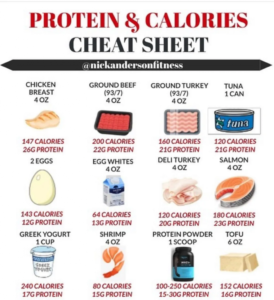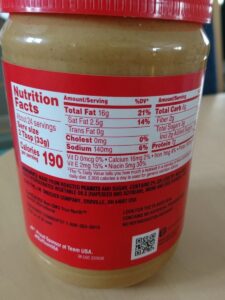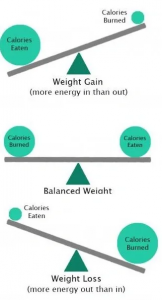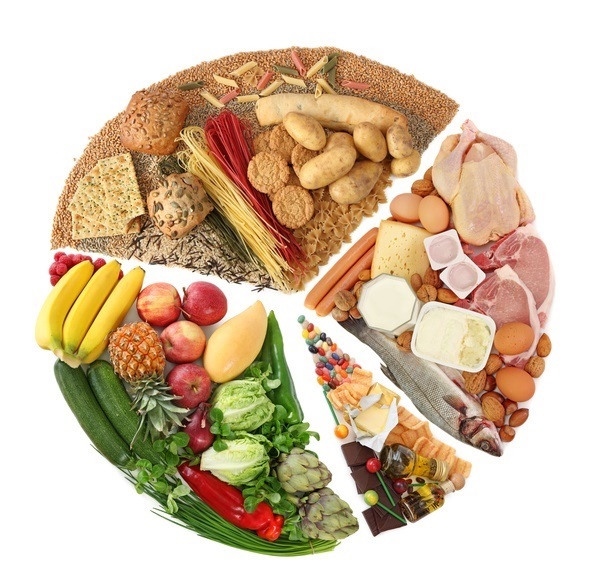WTF Is A Macro?
WTF is a macro anyways?
You may have heard the phrase “I’m counting my macros.” Or “This fits my macros.” Or my personal favorite “Ice cream fits my macros.”
Food is made up of 3 macronutrients. Proteins, carbs, and fats. The balance of these things combine to make up the three main nutrients our body uses for energy.
In this article I’m going to lay out
- The difference between calories and macros
- What protein is, what it does for you, and how much you need.
- What carbs are, what they do for you, and how much you need.
- What fats are, what they do for you, and how much you need.
- Whether you should worry about counting calories or macros
WTF Is The Difference Between Macros And Calories?
In a sense, they are the same. In another sense, they are not.
Each macronutrient contains a certain amount of calories per gram.
1 gram of protein contains 4 calories.
1 gram of carbohydrates contains 4 calories.
1 gram of fats contains 9 calories.
So macronutrients are part of the calories we eat, broken down a little further, and a little more specifically.
A calorie is a unit of measurement for how much energy is in a food. When we count calories, we are counting the amount of energy we get from our food.
When we count macros, we are counting how the energy from food is broken up.
Each macronutrient does different things for our body, and all three are important for our daily life and energy.
The Three Main Macronutrients
Protein
Why is important?
Protein’s primary job is to repair your body. We most commonly think of it as used for our muscles, and to support our sick gainz.

Eating adequate protein is going to help you recover from your workouts better, and aid in muscle growth.
It also aids in retaining muscle mass, or in some cases, even gaining muscle when you are in a calorie deficit.
Protein is really quite a magical macronutrient for fat loss in particular, because it does two things that supports fat loss.
For one, it helps you feel full longer, as it is the most satiating of the three main macronutrients.
And secondly, it has a higher thermic effect than the other macronutrients. Which means you burn more calories from digesting it than with carbs or fats. You burn about 30% of the calories taken in from proteins.
Where can I get it?
Meat, seafood, eggs, protein shakes, greek yogurt, cottage cheese.
These are some of the best sources of protein.

Beware of some commonly touted “good” sources of protein, that aren’t actually good sources of protein.
Some common ones are beans, peanut butter, and nuts.
While I’m not saying you shouldn’t eat these foods… peanut butter happens to be the nectar of the gods. They just don’t happen to be good protein sources.
Let’s use peanut butter as an example.

With 16 grams of fat, 8 grams of carbs, and 7 grams of protein, based on the math we used earlier of how many calories are contained per macronutrient, we can see this is primarily a fat source.
16 grams of fat x 9 = 144 calories from fat
8 grams of carbs x 4 = 32 calories from carbs
7 grabs of protein x 4 = 28 calories from protein.
13% of the calories are coming from protein. Not a great protein source after all. However, still delicious.
If you’re looking for a little more in depth answer, you can check out my article on How To Get More Protein In Your Diet
How much protein should I eat?
The minimum recommendation for protein is about 0.36 grams of protein per pound of bodyweight.
So if you weight 200 pounds, you’d need at least 72 grams of protein.
However, this recommendation is to avoid a protein deficiency.
Since you’re on a fitness website, my guess is you’re probably trying to figure out how much protein you need to stimulate muscle growth and recovery.
The general recommendation here is between 0.7g – 1g of protein per pound of bodyweight.
So our hypothetical 200 pound individual would need 140-200 grams of protein per day.
Carbohydrates
Why are they important?
Carbs are the body’s main, and preferred source of energy. After you eat carbs, your body breaks it down into glucose, otherwise known as blood sugar, which your body uses for energy.
This is why if you’ve ever tried a low carb, or no carb diet, you probably felt sluggish, or cranky, or outright Incredible Hulk angry.

Where can I get it?
Fruit, vegetables, starches, bread, grains, pasta, processed foods.
Carbs are plentily available in food.
And there’s no shortage of them to go around.
How many carbs should I eat?
Technically, you can live without carbs, and the body can convert dietary fat into a fuel source.
With that being said, you can also charge an iPhone with a potato as an electricity source, but all the same, I’ll stick to using an electrical outlet.
The real answer to how many carbs you should eat is… it depends.
If you’re training very hard in the gym, or an endurance athlete, it’s important for you to set this number on the higher end.
If you do fine with a low carb diet, and are not constantly thinking about Pop Tarts every 12 seconds while doing it, then you can set this on the lower end.
For most people, I’d generally recommend for 45-65% of your daily calories to come from carbohydrates.
To figure out this number for yourself, you’ll need to find an adequate calorie range for you to fall into.
You can do that by getting my Free Calorie Calculator, and find out what your goal calorie target is.
One you’ve got that squared away, take the number you’ve been given for calories, and multiply by 0.6 for the high end, and 0.4 for the lower end. Then divide by 4.
For example, if you have a calorie target of 2,400. 2,400 x 0.6 = 1560. 1560÷4 = 360 grams for the high end. 2,400 x 0.4 = 960. 960÷4 = 240 grams for the lower end.
Again, if you function well off a lower carb diet, that’s okay and you can go lower. But for most people, I don’t recommend it. You’ll get much more energy and food satisfaction out of not restricting carbs.
Fats
Why are they important?
Fat is an essential macronutrient, and your body cannot survive without it. It aids in the absorption of vitamins, hormone production, immunity, body tissue health, and metabolic support. There’s also strong evidence to support cardiovascular protection, and alleviate symptoms of depression. Yeah that’s right, eating fats make you less depresso espresso.
Where can I get it?
Dairy, nuts, oils, meats, some seafoods, and basically anything fried and delicious.
How much do I need?
Just like with carbs, it depends.
The main thing is you want to consume at least 15% of your total calories from fat.
Above, I’ve already laid out your guidelines for protein and carbs, whatever’s left over is reserved for your fat intake.
The Fourth Macronutrient: Alcohol
Why is it important?
It’s not. You can live a perfectly healthy, and happy life without alcohol.
However, if you choose to indulge, it can make you seem more confident, while also making you look like a complete idiot.
It can increase your levels of fun at parties, while leaving you with a raging morning hangover.
It has the capability to make you puke, shit yourself, and piss yourself all at the same time.
But anywho, alcohol contains calories, so that’s why it gets the honor of being the “fourth” macronutrient. 1g of alcohol contains 7 calories.
Where can I get it?
If you’re under 21, you can’t
Otherwise, beer, liquor, wine, or Grandpa’s “cough medicine”

How much do I need?
Depends. Are you in for a game of charades with your boring neighbors? Then maybe a bit more than usual.
Counting Macros Vs. Counting Calories
If you’re trying to reach a certain physique, or performance goal, counting calories and counting macros are both viable options.
No matter what, losing weight, maintaining weight, or gaining weight comes down to one thing. Calories in vs. calories out.

But if you completely ignore macronutrients, your goals may suffer.
For example, if you ignore protein, it’s going to have a significant impact on muscle growth and recovery.
No matter what your goal, I’d recommend to keep track of protein.
For fat loss, you can either worry about counting macros, with the total caloric content of your macros adding up to you being in a calorie deficit (as you found with my calorie calculator that you downloaded earlier).
Or you can just worry about counting calories and protein. Make sure your calories are within the range, and you’re getting 0.7-1g of protein per pound of bodyweight.
Macros are a little more regimented and complex. If you’re up for the challenge, it can be worth it.
If you like to keep it simple, I’d go the calories and protein route.
Final Thoughts: WTF is a macro?
So now you know wtf a macro is.
You know that it is a more detailed breakdown of the energy that goes into our body.
And you know the 3 types of macronutrients, plus the bonus fourth, which you had a lot of in college.
With that being said, if you have any questions, please ask. The comments are open below, or you can shoot me an e-mail at [email protected]
I’m also taking clients for 1:1 online coaching.
If you’re looking for a little more guidance into what you should be eating for macros, and how to actually hit them, I’m here to come up with a nutrition plan for you. That way you never hit a plateau, and achieve all of your fitness goals. And you can do it from absolutely anywhere in the world.
Much love,
Nick


 Find Out How Many Calories Your Body Needs
Find Out How Many Calories Your Body Needs